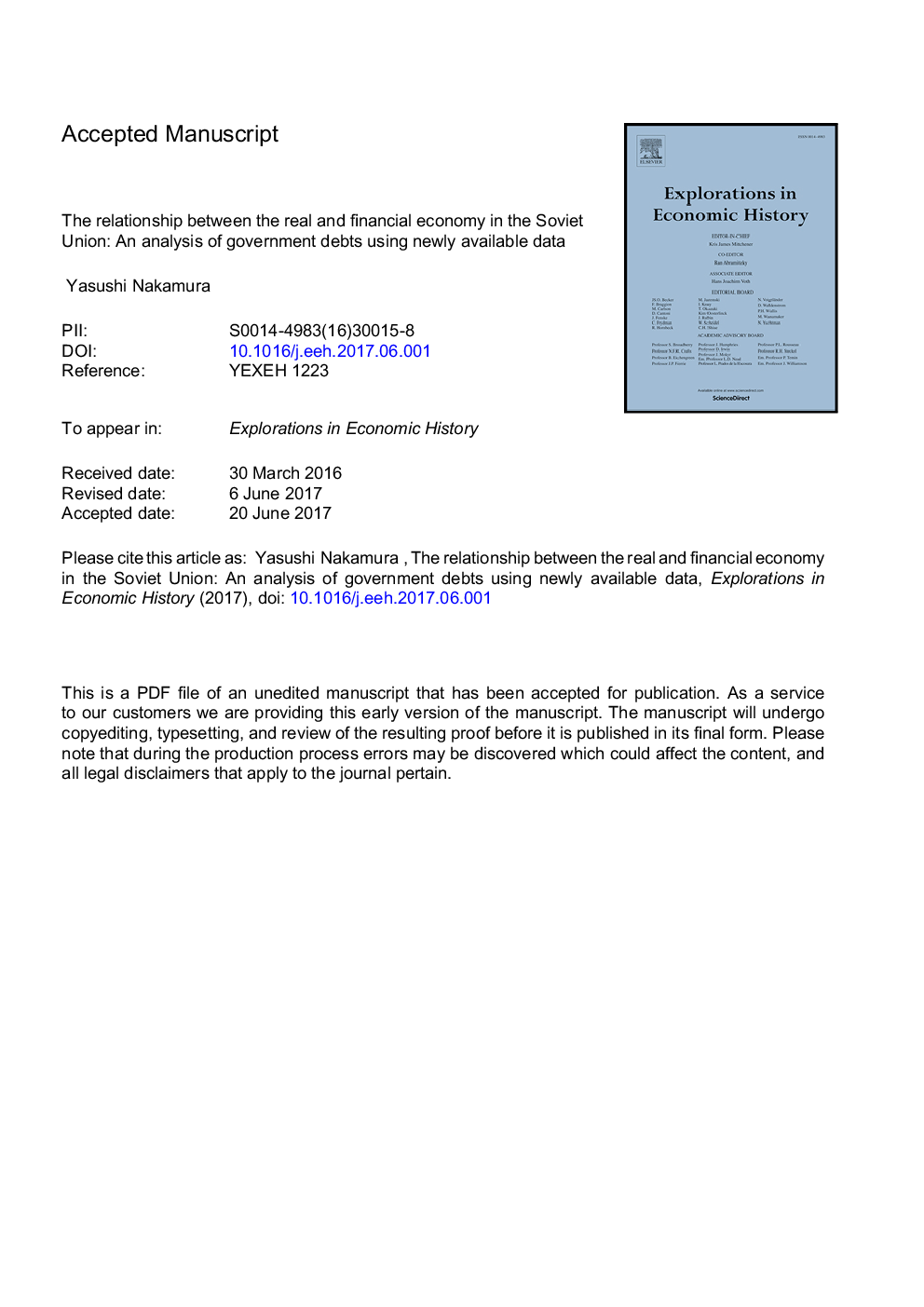| Article ID | Journal | Published Year | Pages | File Type |
|---|---|---|---|---|
| 7351940 | Explorations in Economic History | 2017 | 54 Pages |
Abstract
Newly available Soviet data reveal that government debt increased to compensate for inefficient use of funds for most of the Soviet period. Given the difficulty in managing fiat money without information and data generated by the market, and the simple Soviet financial structure, the increasing debt suggests that non-performing financial assets accumulated in the household sector, and inefficient real assets built up in the enterprise sector. The empirical analysis using a small time-varying parameter vector autoregression model identified that funds supplied to the economy had contributed at a decreasing rate to economic growth during nearly the entire Soviet period. Funds continued to be used wastefully, non-performing financial assets accumulated, and consequently the value of the ruble was decreasing. In this sense, Soviet monetary management was inefficient. Future research will include efforts to investigate responsiveness of price regulating authorities to changes in monetary and financial situation, to understand monetary management on the republic level, and to quantify the efficiency of use of funds.
Related Topics
Social Sciences and Humanities
Arts and Humanities
History
Authors
Yasushi Nakamura,
